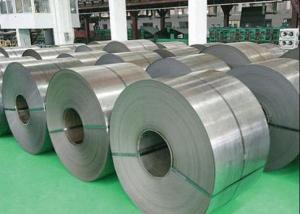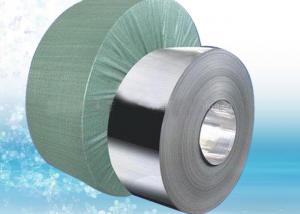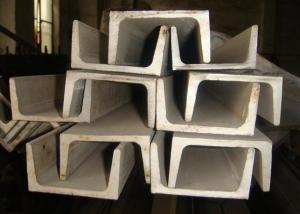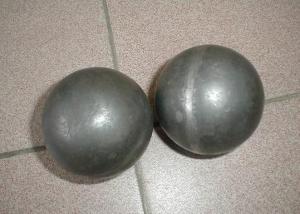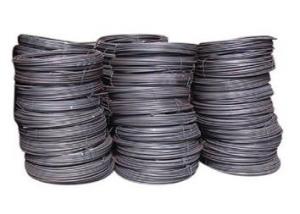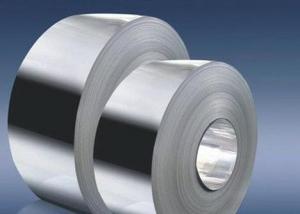201 2B Stainless Steel Strips
- Loading Port:
- China Main Port
- Payment Terms:
- TT or LC
- Min Order Qty:
- 1 Ton m.t.
- Supply Capability:
- 2000 Tons Per Month m.t./month
OKorder Service Pledge
OKorder Financial Service
You Might Also Like
201 2B Stainless Steel Strips
1. Chemical composition of 201 2B Stainless Steel Strips
C | Si | Mn | P | S | Ni | Cr |
max0.15 | max1.00 | 5.50-7.50 | max0.06 | max0.03 | max1.00 | 16.00-18.00 |
2. Mechanical properties of 201 2B Stainless Steel Strips
Yield Strength | Tensile | Elongation | Hardness (HV) | Hardness (HRB) |
245 | 640 | 40 | 253 | 100 |
3. Standard:
AISI, ASTM, GB, EN, DIN, JIS
4. Surface:
2B, NO.1, BA, NO.4, Hairline, SB, Mirror finish, Anti-skid, Cherkered etc.
5. Size:
Thickness: 0.3-3mm (cold rolled), 3-40mm (hot rolled)
Width: 1000mm or 1219mm or 1240mm for cold rolled, 1500mm for hot rolled.
Length: As customers' request.
6. MOQ: 1 Ton
7. Payment terms:T/T or L/C
8. Packing:
Seaworthy package with wooden or Iron pallets with the paper and the steel strip, or as customers' request.
9. Delivery time:
Usually about 7 days after we confirming the order, or according to your quantity.
If you have any question or demand, pls feel free to contact me.
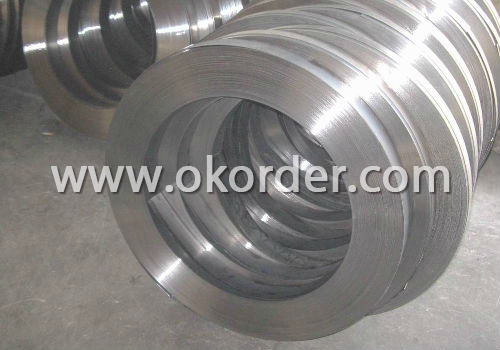
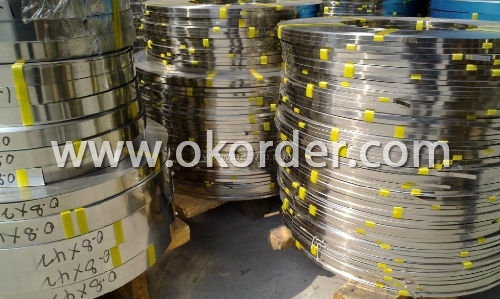
- Q:Can stainless steel wire be used for fishing line?
- No, stainless steel wire is not suitable for fishing line. It lacks the flexibility and stretch required for fishing, which can lead to limited sensitivity and increased risk of breaking or damaging the fishing gear.
- Q:What are the different types of stainless steel wire rope clamps?
- There are several different types of stainless steel wire rope clamps, including the U-bolt style, saddle style, and clip style clamps. Each type offers unique advantages and is designed to securely hold wire rope in place, providing a reliable connection.
- Q:Can stainless steel wire be used for wire rope thimbles?
- Wire rope thimbles can indeed utilize stainless steel wire. These thimbles serve the purpose of safeguarding and enhancing the wire rope loops, averting any potential damage or distortion. Stainless steel wire possesses remarkable attributes such as immense strength, corrosion resistance, and longevity, rendering it an ideal option for thimbles. Its capability to endure substantial loads and endure harsh environmental circumstances makes it suitable for diverse applications, encompassing marine, industrial, and outdoor utilization. By employing stainless steel wire rope thimbles, wire ropes are bestowed with additional safeguarding and prolonged lifespan, guaranteeing their secure and efficient utilization.
- Q:What is the tensile strength of stainless steel wire?
- The tensile strength of stainless steel wire can vary based on factors such as the specific grade or alloy used, as well as the manufacturing process and any heat treatment applied. Nevertheless, stainless steel wire generally possesses a high tensile strength. For instance, stainless steel wires like 304 and 316, which are commonly used, exhibit a tensile strength that ranges from approximately 550 MPa to 750 MPa (79,770 psi to 108,775 psi). This impressive tensile strength renders stainless steel wire suitable for a wide range of applications that necessitate both strength and resistance to corrosion. It is worth mentioning that the tensile strength can be further improved through specialized processing or alloy modifications in order to meet specific application requirements.
- Q:What are the different types of stainless steel wire weaving patterns?
- Various industries and applications commonly utilize several distinct stainless steel wire weaving patterns. Among the most popular patterns are: 1. Plain Weave: The simplest and most prevalent weave pattern, it involves a basic over-and-under interlocking of wires, resulting in a uniform appearance. Plain weave is versatile and suitable for a wide range of applications. 2. Twill Weave: Twill weave patterns possess a diagonal appearance due to the staggered interlocking of wires. This pattern offers greater strength and stability compared to plain weave. Twill weave is often used in applications that require high tensile strength and durability. 3. Dutch Weave: Dutch weave patterns have a denser and more closely spaced weave compared to plain or twill weaves. It is achieved by utilizing a thicker warp wire and a thinner weft wire. Dutch weave is ideal for applications that demand fine filtration and high mechanical strength. 4. Five-Heddle Weave: Specifically designed for excellent filtration efficiency, this pattern consists of four warp wires and one weft wire, resulting in a dense and tight weave. Five-heddle weave is commonly employed in industries such as oil and gas, petrochemical, and pharmaceuticals. 5. Reverse Dutch Weave: Similar to Dutch weave, but with reversed wire positions, this pattern features a finer mesh count and higher stability, making it suitable for applications that require exceptional filtration and high flow rates. 6. Welded Wire Mesh: In this pattern, the wires are spot welded at their intersections, creating a sturdy and rigid mesh. Welded wire mesh is commonly used in construction, fencing, and industrial applications where strength and security are paramount. These examples represent a fraction of the available stainless steel wire weaving patterns. Each pattern possesses distinct characteristics and is chosen based on specific application requirements, such as strength, filtration, or aesthetics.
- Q:How is stainless steel wire manufactured?
- Stainless steel wire is manufactured through a process called wire drawing. This process involves pulling a stainless steel rod or billet through a series of dies to reduce its diameter and increase its length. The first step in the manufacturing process is to select the appropriate grade of stainless steel, which can vary depending on the desired properties of the wire. Common grades include 304, 316, and 430 stainless steel, each with its own unique composition and characteristics. Once the stainless steel rod or billet is selected, it is cleaned and lubricated to facilitate the wire drawing process. This helps reduce friction and heat generation during the drawing operation. The next step involves passing the stainless steel rod or billet through a series of dies. These dies are typically made of tungsten carbide or diamond, which are extremely hard materials capable of shaping the stainless steel without causing excessive wear. Each die in the series has a slightly smaller diameter than the previous one, causing the stainless steel to be drawn through progressively smaller openings. As the stainless steel passes through each die, its diameter is reduced and its length is increased. This process is repeated multiple times until the desired diameter and length of wire are achieved. During the wire drawing process, the stainless steel wire is also annealed intermittently to relieve internal stresses and improve its ductility. Annealing involves heating the wire to a specific temperature and then cooling it slowly. This helps enhance the wire's mechanical properties and makes it easier to work with. Once the stainless steel wire reaches the desired diameter, it is then further processed to remove any surface defects or imperfections. This is typically done through a process called pickling, which involves immersing the wire in an acid solution to remove any oxide layers or scale that may have formed during the manufacturing process. After pickling, the stainless steel wire may undergo additional processes such as coating or heat treatment, depending on its intended application. These processes can further enhance the wire's corrosion resistance, strength, or other desired properties. Once the manufacturing process is complete, the stainless steel wire is typically wound onto spools or reels for storage and transportation. It can then be used in a wide range of applications, such as in the construction industry, automotive sector, or for various industrial purposes. Overall, the manufacturing of stainless steel wire involves a combination of precision engineering, material selection, and various processing techniques to produce a versatile and high-quality product.
- Q:Does stainless steel wire have magnetic properties?
- Yes, stainless steel wire does have magnetic properties.
- Q:Can stainless steel wire be used for medical applications?
- Yes, stainless steel wire can be used for medical applications. It is commonly used in medical devices and equipment due to its high strength, corrosion resistance, and biocompatibility. Some examples of its medical applications include surgical instruments, orthopedic implants, cardiovascular stents, and catheters.
- Q:Can stainless steel wire be used for making wire shelving?
- Certainly, wire shelving can be crafted using stainless steel wire. This material, known for its durability and resistance to corrosion, proves to be an exceptional selection for wire shelving. Not only is it robust enough to bear the weight of hefty objects, but it can also endure the strain and pressure usually exerted on wire shelving. Moreover, stainless steel is effortlessly cleaned and maintained, rendering it a highly practical choice for storage objectives.
- Q:Can stainless steel wire connectors be used for grounding?
- Indeed, grounding can be achieved by utilizing stainless steel wire connectors. Given its exceptional conductivity, stainless steel proves to be an efficient conductor of electrical current. When installed and fastened correctly, stainless steel wire connectors establish a trustworthy and long-lasting grounding connection. Nevertheless, it is imperative to verify that these connectors are explicitly designed for grounding purposes and comply with the required electrical codes and standards. Moreover, adhering to appropriate installation protocols and seeking guidance from a certified electrician is crucial when uncertainty arises regarding any aspect of the grounding system.
1. Manufacturer Overview |
|
|---|---|
| Location | Zhejiang, China |
| Year Established | 2005 |
| Annual Output Value | Above US$1.6 million |
| Main Markets | Europe, North America. |
| Company Certifications | |
2. Manufacturer Certificates |
|
|---|---|
| a) Certification Name | |
| Range | |
| Reference | |
| Validity Period | |
3. Manufacturer Capability |
|
|---|---|
| a)Trade Capacity | |
| Nearest Port | Shanghai |
| Export Percentage | 40% |
| No.of Employees in Trade Department | Above 30 people |
| Language Spoken: | English, Chinese |
| b)Factory Information | |
| Factory Size: | Above 5000 square meter |
| No. of Production Lines | Above 6 |
| Contract Manufacturing | OEM Service Offered |
| Product Price Range | Average |
Send your message to us
201 2B Stainless Steel Strips
- Loading Port:
- China Main Port
- Payment Terms:
- TT or LC
- Min Order Qty:
- 1 Ton m.t.
- Supply Capability:
- 2000 Tons Per Month m.t./month
OKorder Service Pledge
OKorder Financial Service
Similar products
New products
Hot products
Hot Searches
Related keywords
